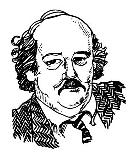Syndicated to Kansas newspapers March 20, 2017
 One of those great little taxes that is quiet, regular and nothing you worry much about, that 20-mill property tax levy for support of K-12 education in Kansas, is about to start making noise.
One of those great little taxes that is quiet, regular and nothing you worry much about, that 20-mill property tax levy for support of K-12 education in Kansas, is about to start making noise.
The deal is that the 20-mill tax, which raises more than $600 million toward the roughly $4 billion a year spent on public schools, is about to expire. No, don’t think about it going away, just think about the Legislature having to reauthorize the tax with a bill this session.
Hmmm…now, if the Kansas Supreme Court in an order earlier this month said that the state isn’t spending enough money on K-12 education, that levy isn’t going to die, is it?
Earlier this month we mentioned that nothing was certain yet but that you might keep your eye on the 20-mill levy. Well, a bill that would reauthorize the 20-mill statewide property tax to help finance K-12 education is now being considered by the Senate Tax Committee.
It is likely to be bumped up to raise more money to meet that Supreme Court demand for more spending on education. And, culturally, while Kansas pumps billions of income and sales tax revenues into school finance, one part of the tax mix—property taxes—is near-exclusively used for school aid.
There’s just something about property taxes and schools that is a natural match, and while nobody wants to pay more in any taxes, including property taxes, Kansans really don’t want their state-assessed property taxes to be spent on anything but education.
Now, it’s just a coincidence that this year, when the Legislature is being asked to pump more money into schools, that the sleeping dog of the 20-mill levy is awakening. Years ago, courts ordered that the state must reauthorize the levy every two years or it expires, and this is the year for the reauthorization.
So, more money needed for schools, legislators are going to have to vote on the mill levy bill anyway, so is a bump in that levy convenient this year? Historically, that tax has ranged from 35 mills from 1994-1996 to 27 mills in 1997 and to the 20 mills in 1998.
Historically, 20 years is a long time for the state to go without raising tax rates on nearly anything. And here’s that 20-mill levy that has been left alone for two decades…
See where this is going? If you must raise taxes and then ask those taxpayers to vote for you anyway, well, telling them that you’ve held rates level for 20 years is almost a good defense.
And, that school mill levy comes with an exemption for the first $20,000 of value of a home, so if your house is appraised at less than $20,000, you don’t pay any tax at all. For people living close to the ground in cheap homes, it doesn’t get much better. Everyone defends the concept of sparing the presumably poor from taxes, and that exemption does it.
For some, it means that you might not have to pay taxes on the $20,000 of value that in-ground swimming pool and spa area adds to your home’s appraisal. Gripe about property taxes, but who wouldn’t like a school tax-free swimming pool? That $20,000 exemption costs the state about $44 million, and some of that lost revenue is being kept by relatively poor people…and some isn’t…
OK, back to that reauthorization of the 20-mill levy. Just increasing the levy by 1 mill is likely to raise about $31 million for the upcoming school year, and it could be just a matter of multiplication to see how many mills added to the levy would raise a substantial amount toward increasing state aid to public schools.
But, there’s a practical political limit on the increase out there somewhere.
Let’s watch and see where the Legislature thinks that limit is…
